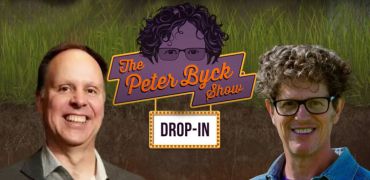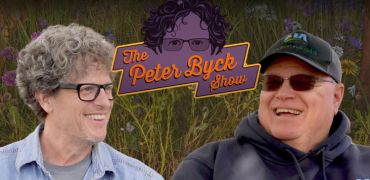Grazing Film Ambles into Town
PUBLISHED 18 August 2023
Source: Gavin McGough | KOTO-FM
Peter Byck has been a filmmaker for decades. Along the way, he’s become a professor at Arizona State, an advocate for climate solutions, and a frequent collaborator with and communicator for the science community.
Listen Here
Ten plus years ago he became interested in how soil will affect climate change, and in how cattle grazing patterns could spell trouble, or present a solution, for the global climate picture.
Amidst his curiosity, Byck says,
“I felt this need for science. I could see it; there was very little science done on this type of grazing, but I found a lot of scientists who wanted to do that.”
His curiosity led to conversation, and those conversations led to a meeting of minds in 2014 at Arizona State University.
“And a lot of people in the room had not met other scientists who were doing other types of work who made up the ecosystem of science we put together to study the ecosystem of farms,” says Byck. “Soil experts, bug experts, bird experts, grazing experts, greenhouse gas experts…”
Those scientists began to run models — they traveled across the country and made observations, and collaborated with farmers. In the meantime, Byck began to roll tape, documenting the process of inquiry.
That process takes time: in this case ten years. Byck amassed a lot of tape.
“It’s a decade. It’s crazy…I know I wouldn’t have started if I knew how long it was going to take. But that’s just the way things seem to be,” Byck says.
The result is a full scientific account of a rotational grazing technique which Byck details in a four part documentary series titled Roots So Deep. The film follows scientists and farmers adopting this new grazing pattern, which Byck calls Adaptive Multi-Paddock, or AMP, grazing.
“And the adaptive way is basically emulating the way bison moved across the great plains,” says Byck. “So what they would do, is they’d move in one herd, they’d be packed tight together, they’d eat half the forage, because that’s the part that was tasty. And then they’d move on for more food and leave the other half of the forage there.”
“They’d stomp on it which keeps the soil cool, and keeps the microbes in the soil thriving, and their manure and their urine were evenly spread,” he continues.
This technique prepares pasture land to rebound and regrow vigorously, as grasses thrive on the manure left behind and draw down carbon into the soils. Although AMP grazing differs from conventional farming, it’s by no means “new.”
Byck points out it largely just copies how Bison would move across the great plains, and follows the guidance of nature.
“It’s not prescriptive. It’s not ‘you do this on May 5th and this on May 10th.’ It’s adaptive and working with nature,” says Byck. “And the farmers, when they adopt it, they love it…they love it”
Byck has now taken the project on tour to share the findings of the study, and screen Roots So Deep across the country.
Next Monday, August 21st he will be in Telluride at the Sheridan Opera House to share the work, in collaboration with Mountafilm, Telluride Science, and the Telluride Institute. The free screening begins at 6:30pm with a Q&A to follow.
And, Byck adds,
“I’ll be around all weekend. If people see me on the street, we can talk!”
After that, the film tour moves on to its next stop, perhaps, at greener pastures.


